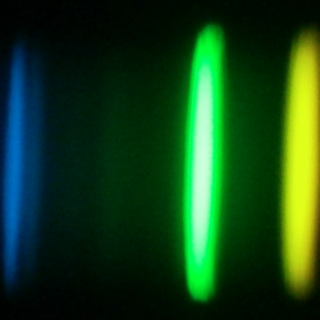Bibcode
Tayar, Jamie; Somers, Garrett; Pinsonneault, Marc H.; Stello, Dennis; Mints, Alexey; Johnson, Jennifer A.; Zamora, O.; García-Hernández, D. A.; Maraston, Claudia; Serenelli, Aldo; Allende-Prieto, C.; Bastien, Fabienne A.; Basu, Sarbani; Bird, J. C.; Cohen, R. E.; Cunha, Katia; Elsworth, Yvonne; García, Rafael A.; Girardi, Leo; Hekker, Saskia; Holtzman, Jon; Huber, Daniel; Mathur, Savita; Mészáros, Szabolcs; Mosser, B.; Shetrone, Matthew; Silva Aguirre, Victor; Stassun, Keivan; Stringfellow, Guy S.; Zasowski, Gail; Roman-Lopes, A.
Bibliographical reference
The Astrophysical Journal, Volume 840, Issue 1, article id. 17, 12 pp. (2017).
Advertised on:
5
2017
Journal
Citations
111
Refereed citations
99
Description
In the updated APOGEE-Kepler catalog, we have asteroseismic and
spectroscopic data for over 3000 first ascent red giants. Given the size
and accuracy of this sample, these data offer an unprecedented test of
the accuracy of stellar models on the post-main-sequence. When we
compare these data to theoretical predictions, we find a metallicity
dependent temperature offset with a slope of around 100 K per dex in
metallicity. We find that this effect is present in all model grids
tested, and that theoretical uncertainties in the models, correlated
spectroscopic errors, and shifts in the asteroseismic mass scale are
insufficient to explain this effect. Stellar models can be brought into
agreement with the data if a metallicity-dependent convective mixing
length is used, with Δα ML,YREC ∼ 0.2 per dex
in metallicity, a trend inconsistent with the predictions of
three-dimensional stellar convection simulations. If this effect is not
taken into account, isochrone ages for red giants from the Gaia data
will be off by as much as a factor of two even at modest deviations from
solar metallicity ([Fe/H] = ‑0.5).
Related projects

Nucleosynthesis and molecular processes in the late stages of Stellar Evolution
Low- to intermediate-mass (M < 8 solar masses, Ms) stars represent the majority of stars in the Cosmos. They finish their lives on the Asymptotic Giant Branch (AGB) - just before they form planetary nebulae (PNe) - where they experience complex nucleosynthetic and molecular processes. AGB stars are important contributors to the enrichment of the
Domingo Aníbal
García Hernández

Chemical Abundances in Stars
Stellar spectroscopy allows us to determine the properties and chemical compositions of stars. From this information for stars of different ages in the Milky Way, it is possible to reconstruct the chemical evolution of the Galaxy, as well as the origin of the elements heavier than boron, created mainly in stellar interiors. It is also possible to
Carlos
Allende Prieto